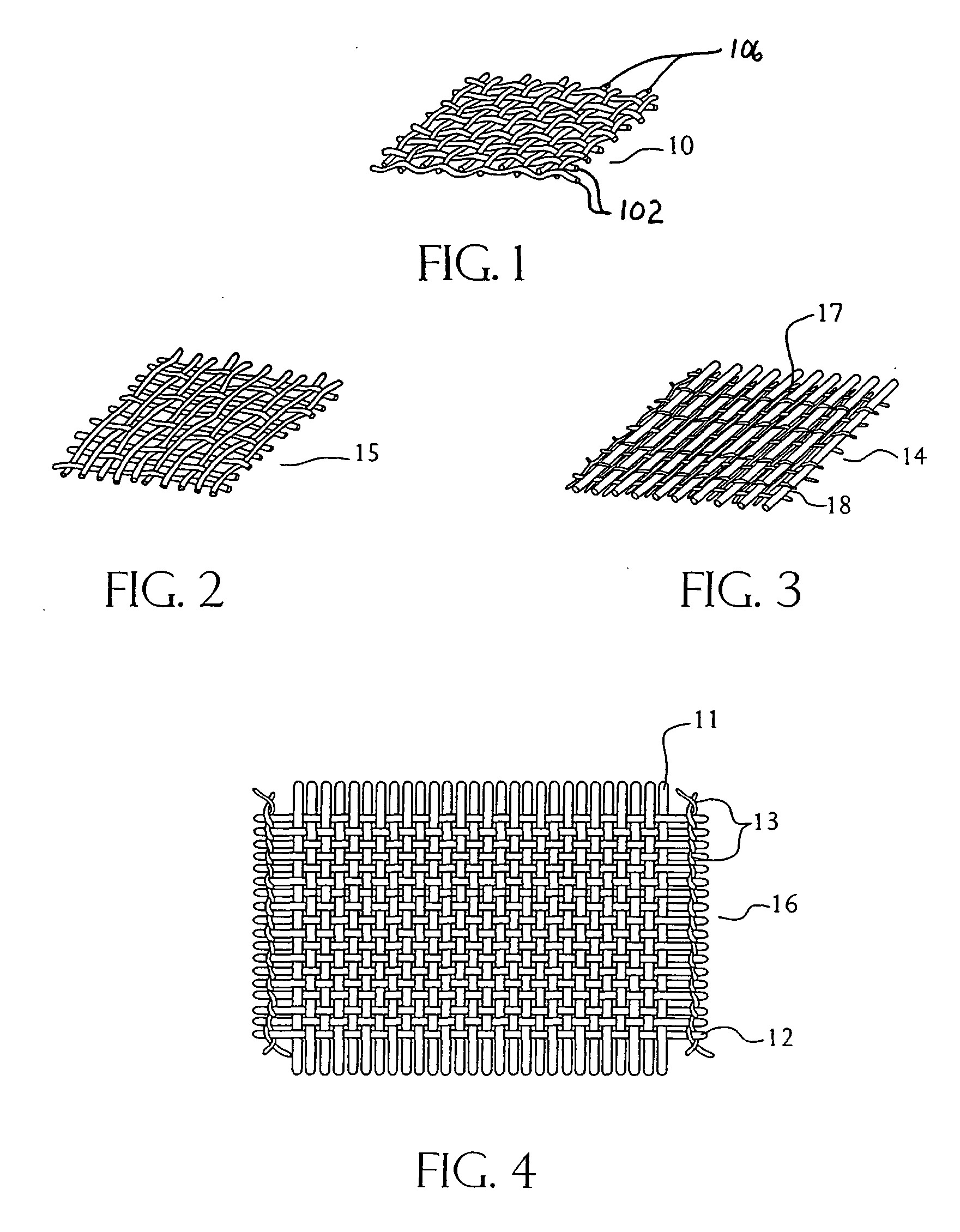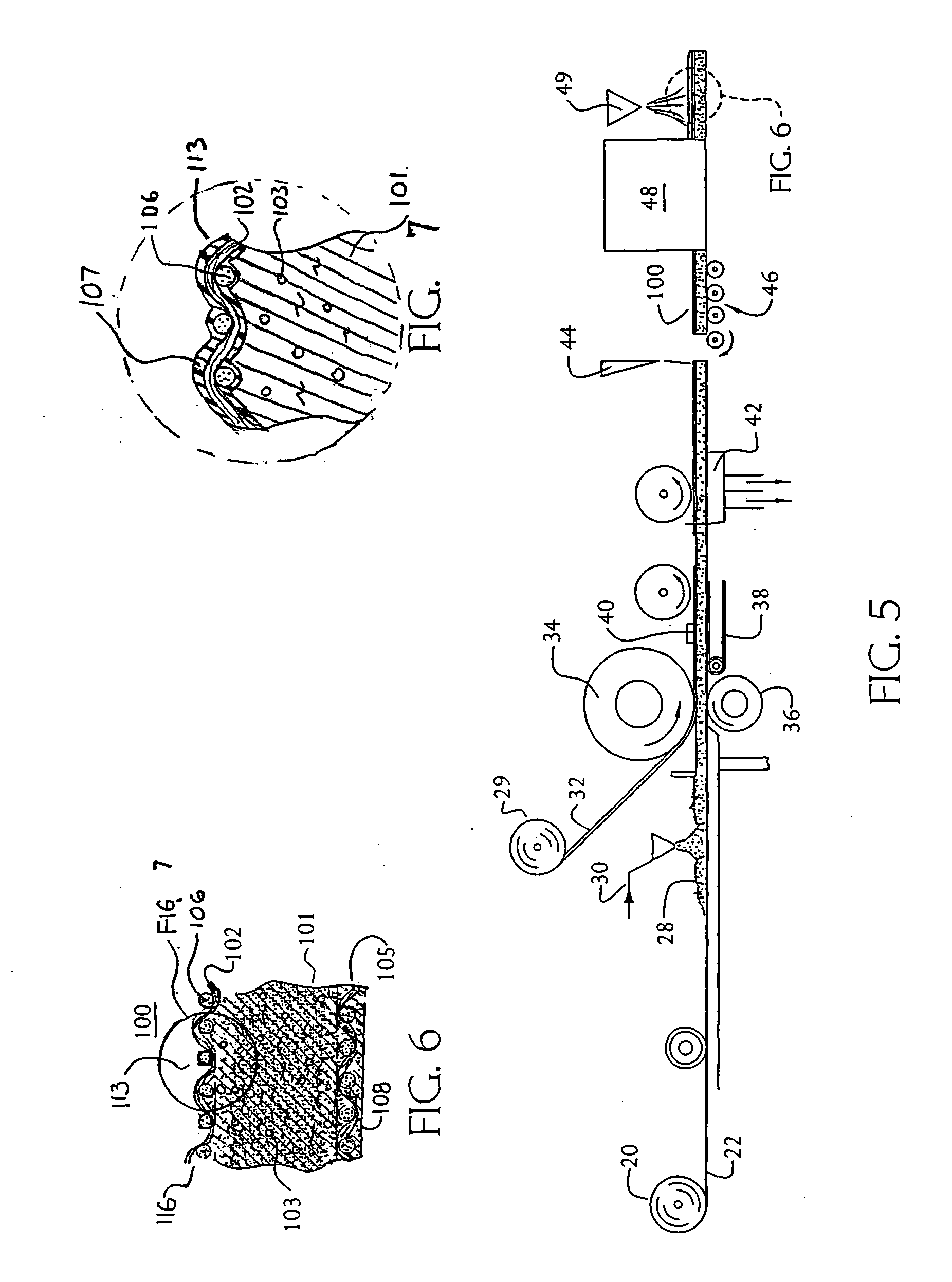Fabric reinforcement and cementitious boards faced with same
a technology of fabric reinforcement and cementitious boards, applied in the direction of pile-fabric looms, synthetic resin layered products, water-setting substance layered products, etc., can solve the problems of deformation of the fabric, and inability to meet the requirements of weaving, so as to improve the uniformity of coating, and improve the effect of coating balan
- Summary
- Abstract
- Description
- Claims
- Application Information
AI Technical Summary
Benefits of technology
Problems solved by technology
Method used
Image
Examples
Embodiment Construction
Facing materials, cementitious boards and methods of manufacturing cementitious boards having the facing materials of this invention are provided. Facing materials which are embedded totally, or only partially, so as to present a fibrous facing, are within the scope of this invention. The fabric reinforcements of this invention can be employed in many end-use reinforcement applications, such as, for example, gypsum and cement boards, asphalt and road reinforcement, roofing applications, soil reinforcement, polymer-matrix reinforcement, and as stand-alone coated fabrics in filters, screens and garment applications.
With reference to the Figures, and particularly to FIGS. 1-4 thereof, there is depicted a series of fabrics useful as the facing layer of the preferred facing material of this invention. Needled, woven, knitted, braided and mesh-type nonwoven and composite materials are preferred because of their impressive strength-to-weight ratio and, in the case of wovens, braided, kn...
PUM
| Property | Measurement | Unit |
|---|---|---|
| Time | aaaaa | aaaaa |
| Fraction | aaaaa | aaaaa |
| Fraction | aaaaa | aaaaa |
Abstract
Description
Claims
Application Information
 Login to View More
Login to View More - R&D
- Intellectual Property
- Life Sciences
- Materials
- Tech Scout
- Unparalleled Data Quality
- Higher Quality Content
- 60% Fewer Hallucinations
Browse by: Latest US Patents, China's latest patents, Technical Efficacy Thesaurus, Application Domain, Technology Topic, Popular Technical Reports.
© 2025 PatSnap. All rights reserved.Legal|Privacy policy|Modern Slavery Act Transparency Statement|Sitemap|About US| Contact US: help@patsnap.com



